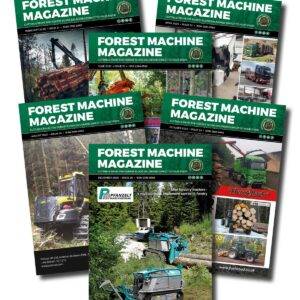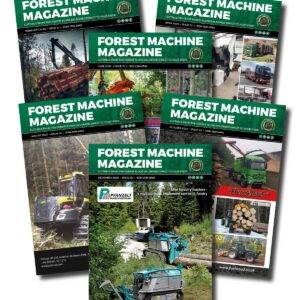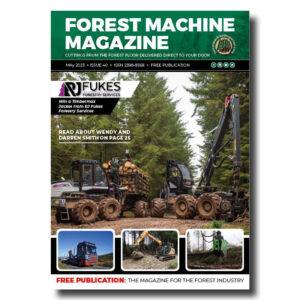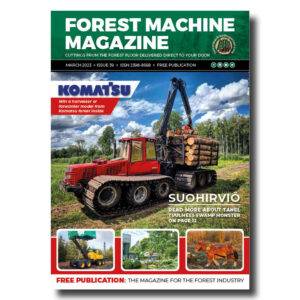Wildfires are having a devastating effect on their forests with a lot of the old growth trees in imminent danger
Canada has lost more than 1% of its forested land to wildfires over the past few weeks. That’s from the Forest Products Association of Canada (FPAC), a trade association representing Canada’s wood, pulp, and paper producers both nationally and internationally. : MyMuskokaNow
Derek Nighbor, FPAC CEO and President says foresters in Canada manage annually about a little over 700,000 hectares of land, adding that the country has lost about six times that amount already.
“Over 200 families lost their homes just outside of Halifax. That’s in an urban area where there’s no forest management happening. Sadly an-other 60 plus families lost their homes in Shelburne County in Nova Scotia and that’s a forest that was getting quite old and very, very dense. It’s been a mix. We’ve seen the fires happening in managed and unmanaged forests as well,” he said.
Mr Nighbor says FPAC has thousands of workers, families and people in forestry communities who have been evacuated and a lot of them are still not in their homes today as the country still deals with wildfires.
“The focus right now has been more on the human side of this. Taking care of workers and their families who are displaced from their homes, protecting their homes and communities, trying to keep them safe,” he said.
Mr Nighbor says the industry’s supply chain is also feeling the hit with a lot of their harvesting operations across the country stopped. He says it’s just not safe in some places to be operating.
“A number of our mills aren’t running right now. Not all of them, a lot still are, but many in serious fire zones are temporarily closed until we can get the fire risk under control,” he said.
It’s going to take weeks after the wildfires stop to understand the impact on the forest industry.
In the meantime, one of the things FPAC is concerned about is as these forests get older, they become more susceptible to fire. Actively managing forests is critical in a changing climate. FPAC is trying to raise awareness for how the trend in the country is to manage less, not more.
“We have about 9,000 trees for every Canadian. But across our boreal forest we also have about 60% of our trees between the ages of 61 and 140 years old, as per the federal government’s national inventory report on our forests,” Mr Nighbor said.
He says once they start getting into that year range, they start to diminish in terms of their ability to store carbon and they’re more vulnerable to pests, drought, windstorms and fire. Provincial and federal governments need to start looking at Land Management more through a fire lens. For example, the fire in Shelburne County, Nova Scotia was a very dense older forest that was just ready to explode.
“We are seeing an increasing protection agenda in terms of trying to protect more and that’s really important when it comes to Indigenous values and cultural areas in terms of species at risk, carbon rich wet-lands and peatlands. But if we don’t more actively manage these aging forests, these fires are going to get worse,” he said.
Looking through a fire lens means more money from municipalities to fireproof their communities and to put fire breaks around their communities to keep them safe. Mr Nighbor says it’s also going to mean more prescribed burns as well as efforts to get more actively decaying and dead wood out of the bush so it doesn’t become kindling for the next fire season.
“When Canadian foresters are managing the land and harvesting, we’re replacing at least two trees for every one that we harvest and that that keeps our forests as forests forever. That’s our commitment to sustainability in Canada. Because the majority of forestry operations hap-pen on provincial and crown lands, for forests that burn there, there’s no automatic replanting of those trees,” he said.
Replanting is then left to natural regeneration and the concern is that in some parts of the country the fires are burning so hot that they’re scorching the earth and they could in fact limit the natural regeneration that would happen.
-
That’s a remarkable amount of work hours for a single machine, the Norcar 600 owned by Erkki Rinne is taken well care of, it even has the original Diesel engine.
-
Kieran Anders is a forestry contractor working in the lake district. His work involves hand cutting and extracting timber using a skidder and tractor-trailer forwarder.
-
It is not possible to eliminate chain shot, but there are simple steps that can be taken to reduce the risk.
-
Arwel takes great pride in the fact that the mill has no waste whatsoever, “the peelings are used for children’s playgrounds, gardens and for farm animals in barns in the winter and the sawdust has multiple uses in gardens and farms as well.
-
Timber hauliers need to encourage young blood in, and also look after the hauliers we have, we need make the sector a safe and positive place to work.
FIND US ON
Related Posts
Forest Machine Magazine is written and edited by a forest professional with over 40 years hands on experience. We are dedicated to keeping you informed with all the latest news, views and reviews from our industry.
To support us you can subscribe to our bi-monthly magazine which is delivered to your door from only £15 per year.
Subscribe here
#homeoflogging #writtenbyloggersforloggers #loggingallovertheworld
-

 1 Year Subscription£0.00
1 Year Subscription£0.00 -

 2 Year Subscription£0.00
2 Year Subscription£0.00 -

 Issue 40£0.00
Issue 40£0.00 -

 Issue 39£0.00
Issue 39£0.00 -

 Sustainable Logging: Powering The Planet T-Shirt£17.50 – £20.00
Sustainable Logging: Powering The Planet T-Shirt£17.50 – £20.00 -

 Sustainable Logging: Powering The Planet Hoodie£33.00 – £36.00
Sustainable Logging: Powering The Planet Hoodie£33.00 – £36.00

